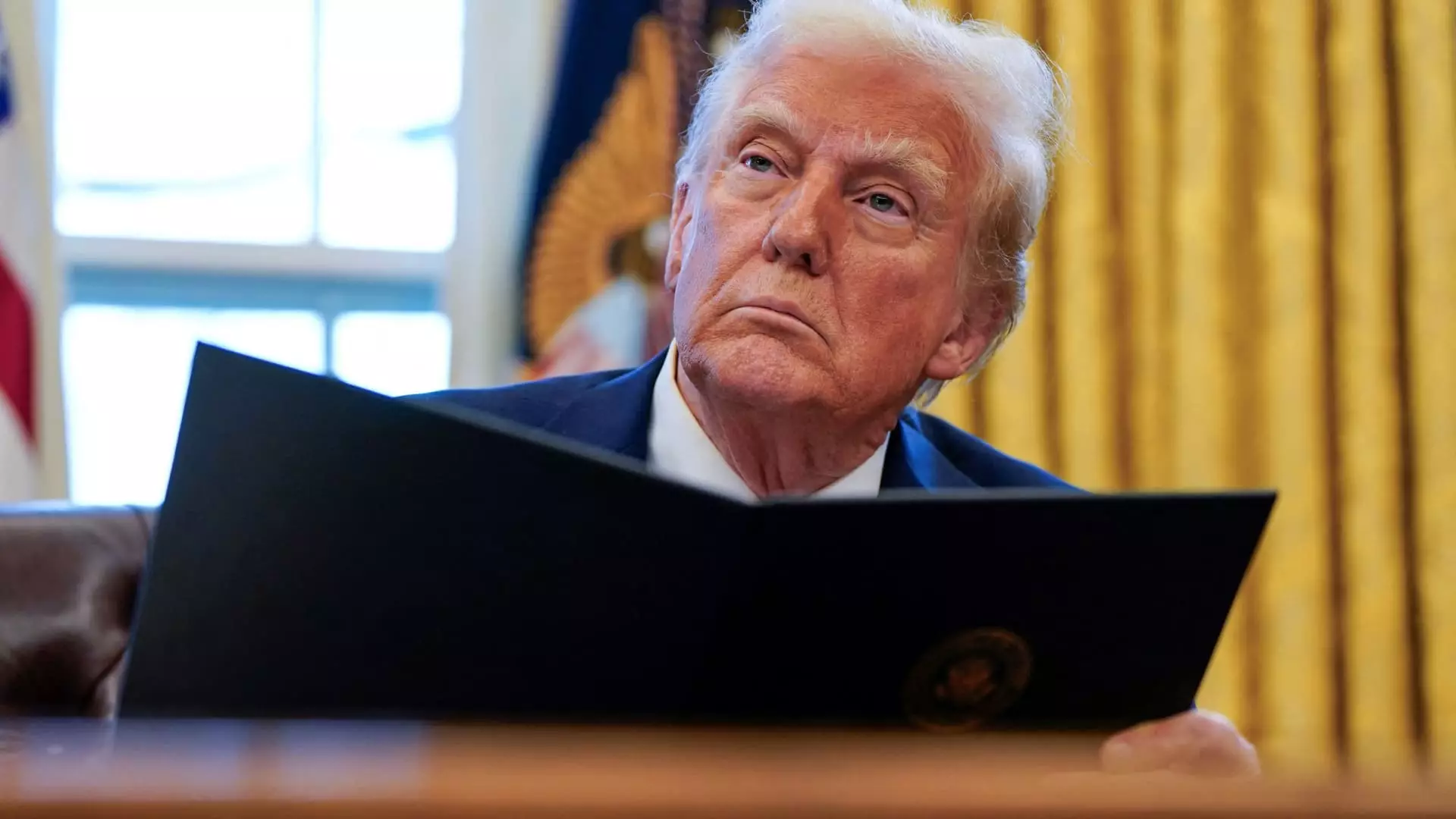In a development that has stirred considerable debate, President Donald Trump has announced a new set of tariffs targeting major trading partners, a move that appears to be rooted in controversial foreign policy objectives. The official confirmation came from White House Press Secretary Karoline Leavitt, who stated that tariffs would be levied at 25% on both Canada and Mexico and a 10% duty on goods imported from China. This decision follows weeks of speculation regarding potential U.S. trade policies and is positioned as a response to concerns about the influx of illegal fentanyl into the United States—a substance linked to significant public health issues.
The stock market reacted swiftly to the announcement, witnessing a decline of more than 300 points in the Dow Jones Industrial Average. This drop reflects investor unease regarding the potential economic repercussions of these tariff measures. Economists typically view tariffs as double-edged swords; while they can protect domestic industries by making foreign goods more expensive, they often lead to higher consumer prices and can provoke retaliatory actions from trading partners.
The administration’s rationale for these tariffs hinges on acute problems associated with drug trafficking and immigration. It includes the assertion that the high volume of fentanyl—primarily sourced from China and Mexico—represents a national security threat and a public health crisis. Trump’s trade advisor, Peter Navarro, underscored this point by paralleling the significant mortality rate from fentanyl overdoses to the capacity of the Superdome in New Orleans during the upcoming Super Bowl. By framing the tariffs as protective measures, the administration aims to appeal to the American public’s concerns over drug abuse while attempting to leverage economic pressure on foreign governments.
However, whether this strategy will yield the intended outcomes is highly debatable. Critics of the tariffs argue that targeting traditional trade partners on grounds attributed to criminal activity may lead to broader economic consequences. Not only could there be job losses in sectors reliant on imports, but there is also the risk of inflating consumer prices, which disproportionately impacts lower and middle-income households.
As the tariffs signal a potentially more isolationist U.S. trade stance, economists are closely monitoring the broader implications for inflation and consumer spending. The Commerce Department recently reported a rise in inflation to 2.6%—a level that both the government and the Federal Reserve had hoped to stabilize. There are concerns that the tariffs could exacerbate inflationary pressures just as signs were emerging that such pressures might be easing.
Moreover, the Federal Reserve’s stance on fiscal policy is now at a crossroads. Officials, including Fed Governor Michelle Bowman, expressed that clarity regarding the specific implementation of these tariffs—and their potential to either remain a one-time action or escalate into a more protracted trade conflict—is essential for understanding their economic impact. Chicago Fed President Austan Goolsbee emphasized the need for vigilance in assessing how trading partners might retaliate, warning that increased protectionism could ultimately hurt U.S. economic growth.
The imposition of tariffs by the Trump administration is emblematic of a larger trend in global trade relationships marked by rising protectionism. Although these measures are framed as necessary responses to pressing social issues, the ramifications could extend well beyond their intended goals. The economic landscape is becoming increasingly complex, with variables like inflation, consumer behavior, and international relations intermingling in unpredictable ways. As the U.S. navigates this new terrain, the long-term effects of these tariffs on American businesses and consumers remain a cause for concern, making it vital for stakeholders to remain informed and adaptable to rapid changes in trade policy.

